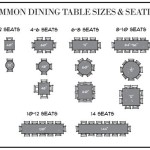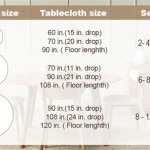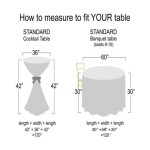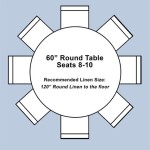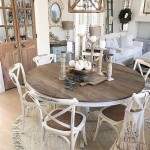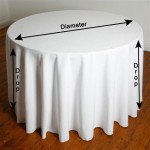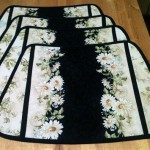Ideal Depth and Table for Round Diamond: Optimizing Brilliance and Fire
The round brilliant diamond is the most popular and arguably the most researched diamond cut. Its faceting arrangement is specifically designed to maximize brilliance, fire, and scintillation – all the desirable optical effects that contribute to a diamond's beauty. Achieving these optical effects, however, hinges primarily on precise cutting proportions, specifically the diamond's depth and table percentages. Understanding the ideal ranges for depth and table is crucial for discerning a diamond's potential sparkle and overall value.
While individual preferences and light source characteristics can influence perceived beauty, generally accepted ranges for depth and table percentages exist. These ranges are based on extensive gemological research and modeling that demonstrate how light interacts with the diamond based on these proportions. Deviating significantly from these optimal ranges can result in light leakage, reduced brilliance, or a dull and lifeless appearance. Conversely, diamonds cut within the ideal parameters are more likely to exhibit exceptional light performance.
The depth percentage of a diamond refers to the ratio of the diamond's total depth (from table to culet) to its girdle diameter. It is expressed as a percentage. The table percentage, similarly, represents the ratio of the table diameter to the diamond's girdle diameter, also expressed as a percentage. These two parameters are inextricably linked to the crown angle, pavilion angle, and girdle thickness, all of which affect the diamond's light handling abilities.
Understanding the Interplay Between Depth and Table
The relationship between depth and table percentages is critical for optimal light return. Light enters the diamond through the table and crown facets, refracts internally, and then reflects back out through the table and crown facets to the observer's eye. If the depth is too shallow, light may escape through the pavilion facets, creating a 'fish eye' effect or overall light leakage. Conversely, if the diamond is too deep, light may become trapped inside, failing to return to the observer and resulting in a dark or lifeless appearance, sometimes referred to as 'nail head' effect.
The table size impacts how light enters and exits the diamond. A table that is too large will restrict the amount of light entering the diamond, reducing brilliance and fire. A table that is too small may allow too much light to escape through the crown facets, contributing to excessive fire at the expense of overall brilliance. Therefore, a balanced relationship between depth and table is essential to maximizing light performance.
Girdle thickness also interfaces with depth and table percentages. A very thin girdle can make the diamond more susceptible to chipping and damage, while an excessively thick girdle can add unnecessary weight to the diamond and obstruct light from entering the diamond properly, resulting in reduced brilliance and fire. The ideal girdle thickness is neither too thin nor too thick, with a range of "thin to slightly thick" often considered optimal.
Ideal Depth and Table Ranges for Round Brilliant Diamonds
Based on decades of gemological research and grading standards, the following table represents generally accepted "ideal" ranges for depth and table percentages specifically for round brilliant cut diamonds. It is important to note that these ranges are guidelines, and individual stones should be evaluated based on their overall light performance and cut grade.
While grading laboratories such as GIA and AGS assign cut grades ranging from Excellent to Poor, relying solely on these grades without understanding the underlying proportions can be misleading. A diamond with an Excellent cut grade may still not exhibit optimal brilliance and fire if its proportions fall at the extreme ends of the acceptable ranges.
For Depth Percentage:
- Ideal Range: 59% to 62.3%
- Acceptable Range: 58% to 63%
For Table Percentage:
- Ideal Range: 54% to 57%
- Acceptable Range: 53% to 59%
These ranges aim to maximize light return, minimize light leakage, and create a harmonious balance between brilliance, fire, and scintillation. Diamonds falling within these ranges are more likely to exhibit superior optical performance, translating into a more visually appealing and valuable gem.
It is important to highlight that specific preferences may exist. Some individuals may prefer a slightly larger table for increased brilliance, while others may prefer a smaller table for more prominent fire. However, significant deviations from the ideal ranges generally compromise overall light performance. The "ideal" ranges serve as a benchmark for achieving optimal light return and a visually balanced appearance.
The Role of Cut Grading and Diamond Certification
Diamond grading laboratories like GIA (Gemological Institute of America) and AGS (American Gem Society) provide comprehensive reports assessing a diamond's quality, including its cut grade. The cut grade considers the diamond's proportions, symmetry, and polish to determine its overall light performance. While the cut grade is a valuable indicator, it should be used in conjunction with a detailed understanding of depth and table percentages.
A diamond with an "Excellent" cut grade from GIA, for example, indicates that it meets certain minimum standards for proportions, symmetry, and polish. However, proportions falling within the acceptable ranges might still be on the higher or lower end and may influence overall light performance. Furthermore, the AGS cut grading system (AGS Ideal, Excellent, Good, Fair, Poor) is considered stricter than GIA's, and an AGS Ideal cut diamond is highly likely to exhibit exceptional light performance due to the more stringent criteria.
It is prudent to request a copy of the grading report and carefully examine the depth and table percentages. Furthermore, it is advisable to view the diamond in person or through high-quality imaging to evaluate its light performance firsthand. Factors such as the lighting environment and the observer's viewing angle can also influence the perceived brilliance and fire of the diamond.
Ultimately, the 'ideal' diamond is subjective and depends on personal preference. However, understanding the interplay between depth, table, and other cut parameters, combined with the objective grading information provided by reputable gemological laboratories, empowers buyers to make informed decisions and select diamonds that exhibit exceptional brilliance, fire, and overall beauty.

The Significance Of Diamond Depth And Table Percentages

What Are The Ideal Proportions For Round Cut Diamonds Revealed

What Are The Perfect Diamond Proportions

Diamond Table And Depth Percentage Steven Stone

How To Pick A Round Diamond Prosumer Diamonds

What Are The Perfect Diamond Proportions

Diamond Depth And Table Here S Everything You Need To Know

Diamond Cut Chart Ajediam

Diamond Anatomy Explained

Diamond Depth Percentages In Round Brilliant Cut Diamonds Findmyrock
Related Posts

